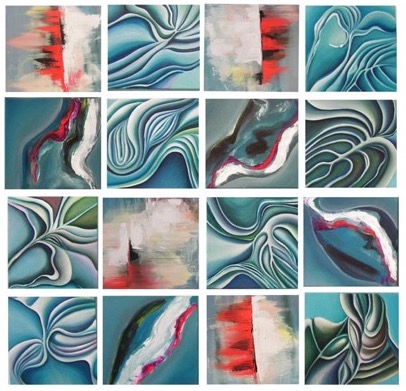A Sense of Wonder: An A/r/tographer’s Musings on Seeing and Being in the World
Main Article Content
Abstract
This paper examines ways of seeing the world differently through the eyes of an a/r/tographer (artist, researcher, teacher). It addresses how I see the world phenomenologically, pedagogically, poetically, and artistically (as a photographer), and how my seeing the world through these varied-yet-connected lenses influences my way of being in the world. The structure of the paper echoes this way of seeing through the various lenses of research, reflection, poetry, and photography.
Keywords: A/r/tography; Phenomenology; Poetry; Pedagogy; Art; Wonder.
Downloads
Article Details

This work is licensed under a Creative Commons Attribution-ShareAlike 4.0 International License.
The copyright notice is CC BY SA.
This license lets others remix, tweak, and build upon your work even for commercial purposes, as long as they credit you and license their new creations under the identical terms. All new works based on yours will carry the same license. Thus any derivatives will also allow commercial use. For example, if someone translates your article into French, the French version of the article will also have to be shared under a CC BY SA license.
References
Aitken, K. (2012). Why visual art? In S. Thomas, A. L. Cole, & S. Stewart (Eds.). The art of poetic inquiry (pp. 66-72). Big Tancook Island, NS: Backalong Books.
Arden, J. (2004). I’ll tell you one damn thing, and that’s all i know! Toronto, ON: Insomniac Press.
Bachelard, G. (1971a). On poetic imagination and reverie. (C. Gaudin, Trans.). New York, NY: The Bobbs-Merrill Company, Inc.
Bachelard, G. (1971b). The poetics of reverie: Childhood, language, and the cosmos. Boston, MA: Beacon Press.
Bayer, T. I. (2006). Art as symbolic form: Cassirer on the educational value of art. The Journal of Aesthetic Education, 40(4), 51-64.
Bendavid-Val, L. (Ed.). (2003). Through the lens: National Geographic greatest photographs. National Geographic Society.
Burrows, M. (2016). Seeing through words: Poetry as visual art. Arts, 28(1), 39-48.
Cameron, J. (1992). The artist’s way: A spiritual path to higher creativity. New York, NY: Jeremy T. Tarcher/Penguin.
Carabajo, R. A. (2012). Pedagogical hope. Phenomenology & Practice, 6(2), 136-152.
Faulkner, S. L. (2012). Poetry as/in research: Connections between poets and qualitative researchers. In S. Thomas, A. L. Cole, & S. Stewart (Eds.). The art of poetic inquiry (pp. 301-315). Big Tancook Island, NS: Backalong Books.
Fidyk, A. (2012). Visitor, host and chrysanthemum: Hosting the unconscious through poetic form. In S. Thomas, A. L. Cole, & S. Stewart (Eds.), The art of poetic inquiry (pp. 347-360). Big Tancook Island, NS: Backalong Books.
Galvin, K. & Todres, L. (2009). Poetic inquiry & phenomenological research: The practice of ‘embodied interpretation.’ In M. Prendergast, C. Leggo, & P. Sameshima (Eds.), Poetic inquiry: Vibrant voices in the social sciences. (pp. 307-316). Rotterdam: Sense Publishers.
Heidegger, M. (2010). Being and time. (J. Stambaugh & D. J. Schmidt, Trans.). Albany, NY: State University of New York Press. (Original work published 1953)
Jardine, D. W. (1994). Speaking with a boneless tongue. Bragg Creek, AB: Makyo Press.
Leggo, C. (2005). The heart of pedagogy: On poetic knowing and living. Teachers and Teaching, 11(5), 439-455. DOI: 10.1080/13450600500238436
Leggo, C. (2007). Tangled lines: The art of researching our lives. Journal of Educational Thought, 41(2), 191-199.
Leggo, C. (2012). Living language: What is a poem good for? Journal of the Canadian Association for Curriculum Studies, 10(1),141-160.
Mason, R. (1982). Paul Ricoeur’s Theory of Interpretation: Some Implications for Critical Inquiry in Art Education. The Journal of Aesthetic Education, 16(4), 71-79.
Oughton, J. (2012). Poetry: Way to know, art. In S. Thomas, A. L. Cole, & S. Stewart (Eds.). The art of poetic inquiry (pp. 73-85). Big Tancook Island, NS: Backalong Books.
Prendergast, M. (2012). Poetic inquiry and the social poet. In S. Thomas, A. L. Cole, & S. Stewart (Eds.). The art of poetic inquiry (pp. 488-502). Big Tancook Island, NS: Backalong Books.
Rilke, R. M. (1954). Letters to a young poet. (M. D. Herter Norton, Trans.). New York, NY: Norton & Company, Inc. (Original work published 1929)
Saevi, T. & Foran, A. (2012). Seeing pedagogically, telling phenomenologically: Addressing the profound complexity of education. Phenomenology & Practice, 6(2), 50-64.
Sameshima, P. (2007). Seeing red: A pedagogy of parallax. Youngstown, NY: Cambria Press.
Schneider, S. P. (2006). Crossing borders with poetry and art. Chronicle of Higher Education, 52(29), n.p.
Sullivan, A. M. (2012). Poetry and cognition: An exploration and a suggestion. In S. Thomas, A. L. Cole, & S. Stewart (Eds.). The art of poetic inquiry (pp. 86-97). Big Tancook Island, NS: Backalong Books.
van Manen, M. (2002). The tone of teaching: The language of pedagogy (2nd ed.). London, ON: The Althouse Press.
van Manen, M. (2007). Phenomenology of practice. Phenomenology & Practice, 1(1), 11-30.
van Manen, M. (2014). Phenomenology of practice. New York, NY: Routledge.
van Manen, M. (2015). Pedagogical tact: Knowing what to do when you don’t know what to do. New York, NY: Routledge.
van Manen, M. (2017). Phenomenology in its original sense. Qualitative Health Research, 27(6), 810-825. DOI: 10.1177/1049732317699381
Wagamese, R. (2011). One story, one song. Vancouver, BC: Douglas & McIntyre.
Wiebe, S. & Margolin, I. (2012). Poetic consciousness in pedagogy: An inquiry of contemplation and conversation. in education, 18(1), 23-36.
Wiebe, S. & Yallop, J. J. G. (2010). Ways of being in teaching: conversing paths to meaning. Canadian Journal of Education, 33(1), 177-198.
Winterson, J. (1996). Art objects: Essays on ecstasy and effrontery. Toronto: Vintage Canada.
Zwicky, J. (2003). Wisdom & metaphor. Kentville, NS: Gaspereau Press.

